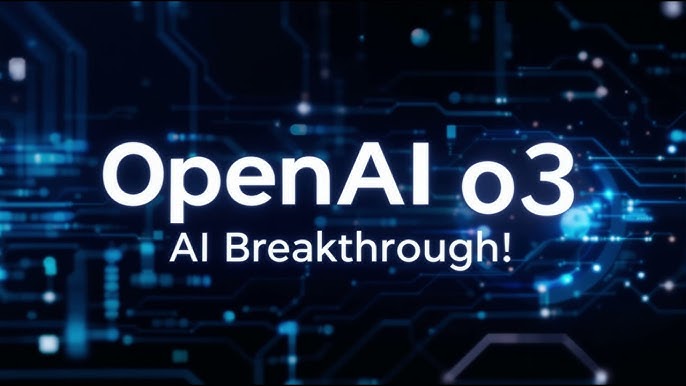OpenAI’s O3 Unveils Game-Changing Advancements
The world of artificial intelligence has witnessed yet another groundbreaking leap with the announcement of OpenAI’s O3. A symbol of innovation and progress, OpenAI’s O3 is not just a new chapter in AI development—it’s a revolution. By scaling AI models in previously unimaginable ways, O3 is redefining how we think about the capabilities and costs of artificial intelligence.
What Makes OpenAI’s O3 a Milestone in AI Innovation
OpenAI has been at the forefront of artificial intelligence innovation, but O3 takes things to an entirely new level. This latest iteration introduces technical advancements that promise not only to enhance the capabilities of AI but to do so in a way that’s more adaptive and efficient. According to the TechCrunch report, the O3 suggests an emerging trend in scaling AI while addressing increasing operational costs.
The key differentiator here is scalability. OpenAI’s O3 models leverage advanced scaling methodologies that allow them to handle complex data and scenarios with unprecedented efficiency. This could propel industries like healthcare, education, and even creative arts into new dimensions.
The Technology Powering the AI Revolution
It’s not just the results but the technology behind OpenAI’s O3 that is capturing attention. The model employs a smarter architecture that combines massive data processing capabilities with improved cost efficiency.
However, these groundbreaking developments are coming at a cost—literally. The infrastructure and energy required to power such advanced AI models are growing, as noted by experts tracking AI trends. While OpenAI is attempting to mitigate this, it’s clear that scaling AI isn’t just a technical challenge—it’s a financial one too.
For a closer look at how OpenAI is changing the landscape of artificial intelligence, you might also explore more updates like this on Zex News.
Exploring the Implications of OpenAI’s O3 Revolution
As remarkable as the advancements in OpenAI’s O3 are, they come with critical implications for society at large. The AI revolution isn’t just about numbers and performance innovations; it raises questions about accessibility, sustainability, and ethics.
For one, who benefits from such cutting-edge technology? With increasing development and operational costs, some fear that AI might become a tool that only large enterprises can afford. This could exacerbate inequalities and limit smaller firms and individuals from accessing its full capabilities.
The Ethical Debate Around AI Scaling
OpenAI’s latest innovations also reignite the ongoing debate around AI ethics. How do we ensure that powerful AI models like O3 are used responsibly? Scaled models bring immense benefits but come with risks, including misuse for disinformation and even potential spying.
Industry leaders, including OpenAI, are calling for stricter guidelines and regulations to govern AI usage. International organizations and governments are already stepping up, looking into policies that balance innovation and responsibility.
How OpenAI’s O3 Will Reshape Industries
The applications of OpenAI’s O3 are as vast as they are transformative. Take healthcare, for instance. With its advanced capabilities, O3 can assist in diagnosing diseases at earlier stages, analyzing complex patient data, and even predicting outcomes more accurately. Industries like finance and cybersecurity also stand to gain, as AI models grow more adept at identifying fraudulent activities and securing digital ecosystems.
Meanwhile, creatives are leveraging AI to redefine storytelling, art creation, and music composition. OpenAI’s game-changing advancements could democratize art by enabling anyone with a vision to bring their ideas to life, all while using advanced AI tools.
Balancing Innovation and Costs
While the advancements are exciting, it’s equally important to acknowledge the economic realities behind these innovations. Reports suggest that the costs of training and deploying models like O3 are rising sharply, prompting companies to ask whether the benefits justify the financial burdens.
This cost-efficiency balance will likely dictate AI adoption patterns across different sectors. Companies and startups must weigh the potential increase in revenue and output against skyrocketing development and infrastructure costs.
Why OpenAI’s O3 Is a Turning Point in AI History
The launch of OpenAI’s O3 brings with it a mixture of excitement and caution. On one hand, the revolutionized capabilities promise a brighter, more efficient future powered by AI in ways we’ve only dreamed of before. On the other hand, it raises pressing questions about accessibility, cost, and potential misuse.
As companies and individuals alike grapple with the enormity of these changes, one thing is clear: OpenAI’s O3 is a turning point. It challenges us to think differently about artificial intelligence—not just as a tool but as an integral part of our future.
“`





